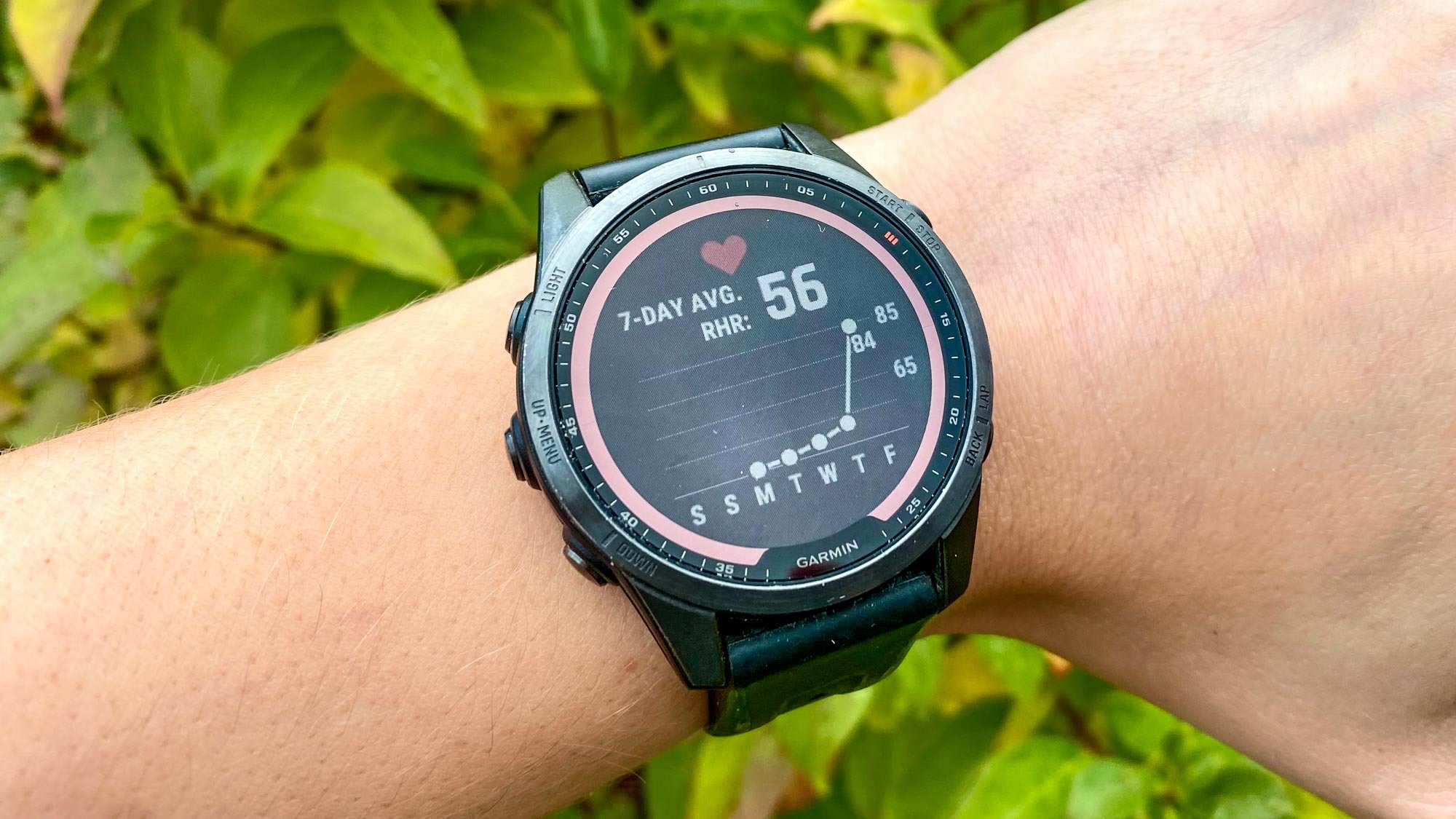
It was one week after running the Manchester Marathon and the first time in three months that I didn’t have any training runs to tick off. My tempo runs were replaced with massage gun sessions and my usual long run on Saturday was replaced with a lie-in followed by a big meal out with friends.
I’d been experiencing heart palpitations the week leading up to this but just put it down to a bit of a post-race adrenaline come down. However, the night I got the alert on my Garmin Fenix 7 I was experiencing palpitations and felt dreadful. The combination of feeling out of sorts and the fact the alert on my watch was so aggressive and unsettling, I went to get things checked out for peace of mind.
Fast forward to a trip to the emergency room and many appointments and medical tests later, I found out that I have an irregular heartbeat and have had to make adjustments to my usual exercise routine while further investigations are done on my heart.
Before then I've always loved wearing one of the best Garmin watches purely for exercise tracking. I like tracking my runs, keeping tabs on my performance, and integrating my watch with my favorite running apps, such as Strava and Runna.
However, this experience made me much more curious about the role fitness trackers play in monitoring our overall health and what we users should do with the information our wearables feed us.
Why did my Garmin raise an alert about my heart?
Although I've been wearing and testing Garmin watches for a while, I didn't know that it can send an alert if your heart rate goes above or below a certain threshold while you're inactive. Inactivity is registered when the watch doesn’t detect movement, like steps, for at least 10 minutes (this feature is disabled during your set sleep hours).
Clearly, when I set up my Fenix 7 two years ago, I was so excited to start using my watch that I must have set the heart alert threshold to the default values and not registered what I was setting my watch up to do.
It turned out there was something not right in my heart and various tests and an appointment with a cardiologist have confirmed there are premature ventricular contractions (PVCs) happening in my heart. PVCs are extra heartbeats that begin in one of the heart's two lower pumping chambers (ventricles).
These extra beats disrupt the regular heart rhythm and can cause a fluttering sensation or a skipped beat in the chest. My cardiologist told me the best fitness trackers don’t always recognize irregular beats, and therefore miss them, which could explain why my watch detected my heart rate as abnormally low.

What should you set the Garmin Abnormal Heart Rate feature to?
What’s an abnormally high or low heart rate for one person is going to look very different for another person. For example, my heart rate while I was in marathon training and at peak performance will look very different to what my heart rate looks like now after having to adjust my exercise intensity and habits while my heart issue is further investigated.
Speaking to Garmin’s Vice President of Fitness, Joe Schrick, on this feature he explains, “It’s personal. You have to personalize it because you need to know what you consider abnormally low and then if you do consider that, we will alert you to it. Then you can say 'This is weird, why is my heart going down this low, I need to talk to a physician’.”
But if you’ve never owned a device that can track your heart rate on the regular then how can you know what is abnormally low or high for your heart rate? One option is to skip setting up the abnormal heart rate feature when you first set up a new Garmin watch and spend the first week or two with the watch monitoring what is typical for your heart rate reading. Then you can then set your alert slightly above or below that range.
To be extra safe, you should consider consulting a doctor if you’re unsure of what an abnormal heart rate would be for you, especially if you have pre-existing health conditions or if you notice sudden changes in your heart rate that don’t make sense based on your activity levels.
Was the alert from my watch helpful?
In the lead-up to the alert appearing on my watch, I was quite happy pretending that the heart palpitations I'd been experiencing were nothing to worry about and that things would sort themself out.
Although I found the alert to be anxiety-riddling, it led me to find out that there is an abnormality in my heart. I am now speaking to the right medical professionals and getting the necessary tests to find out what this means for me and my health.
Scott Burgett, Senior Director of Garmin Health Engineering says, “We don't want to try to suggest that you have any sort of medical condition because we can't do that without a clinical trial and regulatory approvals. But we know our devices are very useful for people who have questions or they want to monitor their own health state.”
Fitness trackers aren’t designed to diagnose you, but they can help you monitor your body more closely and prompt you to seek professional advice if something seems off. In my case, it led to an important step in identifying an issue I might have otherwise overlooked.







